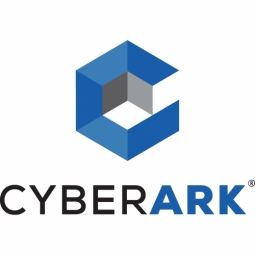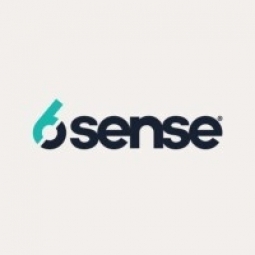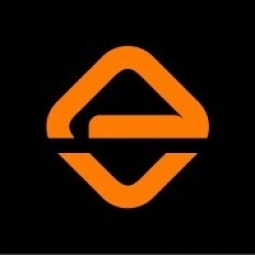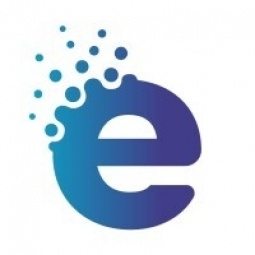Case Studies.
Add Case Study
Our Case Study database tracks 22,657 case studies in the global enterprise technology ecosystem.
Filters allow you to explore case studies quickly and efficiently.
Download Excel
Filters
-
(6,653)
- (2,601)
- (2,127)
- (945)
- View all
-
(5,642)
- (2,469)
- (1,692)
- (826)
- View all
-
(5,571)
- (2,178)
- (1,766)
- (643)
- View all
-
(5,247)
- (2,179)
- (1,715)
- (1,321)
- View all
-
(2,881)
- (1,448)
- (574)
- (376)
- View all
- View all 15 Technologies
- (1,985)
- (1,985)
- (1,915)
- (1,679)
- (1,629)
- View all 42 Industries
- (8,728)
- (4,742)
- (3,618)
- (3,233)
- (2,947)
- View all 13 Functional Areas
- (3,304)
- (2,787)
- (2,603)
- (2,006)
- (1,630)
- View all 129 Use Cases
- (13,581)
- (5,296)
- (4,272)
- (3,520)
- (2,856)
- View all 9 Services
- (504)
- (432)
- (416)
- (382)
- (301)
- View all 1083 Suppliers
Selected Filters

|
Health Access for All Streamlines Software Deployment with Action1
Angeles Community Health Center (ACHC), a nonprofit organization providing medical, dental, and behavioral health care services, was facing a significant challenge in managing software deployment across its 150 staff members spread across four locations. The IT Director, Mike Straffin, was tasked with the responsibility of managing all the organization’s computers and ensuring efficient deployment of software applications and updates. The existing manual approaches, such as Group Policy, proved to be ineffective, leading to a pressing need for a more efficient solution. The urgency for a solution escalated when Mike received a request to deploy WebEx to all machines within a short notice of two days.
|
|
|

|
Healthfirst Implements Zero Trust with CyberArk Identity Security Platform
Healthfirst, the largest not-for-profit health insurer in New York State, faced a significant challenge in evolving its cybersecurity operations. With a rapidly growing member base of 1.8 million and an increasingly complex healthcare landscape, the organization needed a robust cybersecurity program. Healthfirst holds a comprehensive database of member-related information, including enrollment, billing, customer care, payments, processing claims, and health data. The protection of these highly sensitive healthcare records and identities of members and staff was paramount. The organization had adopted a cloud-first strategy, with approximately 70% of systems and applications now cloud-based and 10,000 endpoints, 70% of which are remote. This required a sophisticated and robust security solution. The organization aimed to transform the industry by digitally enabling its members, which included heavy investment in digital apps, virtual community-based offices, and mobile solutions.
|
|
|

|
Kainos Enhances Data Security with CyberArk Endpoint Privilege Manager
Kainos, a UK-based digital technology company, faced a significant challenge in securing sensitive data across its global workforce. With over 3,000 employees in 22 countries, the company had to ensure secure remote work and client location operations. The company's employees had the freedom to choose, download, and install applications, which, while convenient, posed a security risk. An audit revealed that there were 50,000 different applications in use globally. The company also faced constant threats like phishing, fake Office 365 password reset scams, and LinkedIn targeting for new starters. The challenge was to enhance security without hindering the work of different user groups, including developers, business staff, and senior executives, who required varying access rights.
|
|
|

|
Enhancing Cybersecurity for Fortune 500 Clients: o9 Solutions and CyberArk
o9 Solutions, a leading AI-powered planning, analytics and data platform provider, faced a significant challenge in ensuring the security of its Fortune 500 customers' data. The company delivers its services via a multi-tenant cloud environment based on AWS, Azure and Google, making identity protection and management crucial to access control. However, as cyber threats became more widespread and sophisticated, the visibility of identity and threats became poor and disconnected. There was no centralized way to monitor and control the various cloud environments the company used. The company needed to develop a more robust and effective Privileged Access Management (PAM) capability to match or exceed the cybersecurity and corporate governance strategies of its large, global customers. The customers needed reassurance about how o9 Solutions managed and controlled access to their data and the environment.
|
|
|

|
Securing Access to Clinical Resources for Dental Practices: A Case Study on Pacific Dental Services
Pacific Dental Services (PDS), a leading dental support organization, was faced with the challenge of managing and controlling a large number of privileged accounts, passwords, and mobile devices across its geographically dispersed teams. The company supports over 900 dental practices and is responsible for protecting the personal and sensitive healthcare information of dentists and their patients across the U.S. PDS team members had access to approximately 20,000 clinical service websites, and passwords for these sites were recorded on an intranet-hosted spreadsheet, leading to security issues and chaos. Additionally, PDS manages over 5,000 laptops and mobile devices for team members based at their National Support Offices and a good number of remote/mobile team members. Admin rights were being granted, often for basic things like installing a web camera or updating a driver. However, these admin accounts would stay with the device, sometimes for years, posing a security risk. PDS needed a better way to monitor and manage user access across this environment.
|
|
|

|
European Bank's DevSecOps Cloud-Based Initiative with SIGHUP and CyberArk
A leading European bank, serving over ten million customers, was looking to enhance its digital banking services with Kubernetes and cloud-native computing environments. However, with the increased digitization of services, security became a paramount concern for the bank’s stakeholders and clients. As the bank initiated its journey to the cloud, it adopted a variety of cloud-based technologies to rapidly address and respond to new business needs, such as providing customers with secure home banking services and secure apps for mobile phones. The bank realized that adopting cloud and related open-source technologies came with a price in terms of management and security constraints. One of the most critical aspects of the cloud journey was how to properly manage identities and secrets (privileged credentials or grants) across different cloud services. Managing secrets across different cloud and hybrid services are typically a pain point in every organization’s cloud journey.
|
|
|

|
Securing Sensitive Legal Information: A Case Study on TRT8's Use of CyberArk
Tribunal Regional do Trabalho da 8ª Região (TRT8), a judiciary body in Northern Brazil, was facing a surge in cyber attacks, a situation that was particularly concerning given the sensitive nature of the data they handle. The organization had recently digitized its court case management system, making all information related to court procedures, including highly sensitive personal information about individuals involved in employment disputes, digital. Despite having a robust security strategy, TRT8 had little control over users and passwords with access to this information, and privileged access was decentralized. Enforcing security information policies such as regularly changing and updating passwords was a manual and time-consuming process. Endpoint protection relied on a basic anti-virus tool, leaving the organization vulnerable to viruses or malicious attacks that could disseminate throughout the network and harm court operations.
|
|
|

|
FARO Technologies' Engagement Soars with 6sense: A Case Study
FARO Technologies, a global leader in 3D measurement, imaging, and realization solutions, was facing a significant challenge. Despite its success over 40 years, the company had become too product-centric, with a heavy focus on selling hardware products and not enough emphasis on customer experience. This resulted in a disjointed communication strategy, with customers receiving irrelevant emails and multiple sales reps contacting the same organization. Furthermore, the marketing team was focused on generating large quantities of new leads, often through purchased lists, rather than engaging with genuinely interested accounts. This approach resulted in less than 0.78% of marketing-qualified leads resulting in a sale. Despite 70% of FARO's business coming from repeat customers, 80% of their customers hadn't purchased from them in the past two years. The root of these problems was a lack of an account-level view of existing and potential customers, despite having 22 technologies at their disposal.
|
|
|

|
Martal Group's Strategic Pivot with 6sense's Psychographic Data
Martal Group, a leading lead-generation and sales solution provider, faced a significant challenge during the COVID-19 pandemic. The pandemic altered the landscape of cold outreach, necessitating a shift in Martal Group's sales strategy. The company recognized the need to adopt an account-based marketing (ABM) approach, which involved engaging smaller groups within a single account with more targeted messaging. However, traditional ABM programs often require substantial time and effort to scale, which contradicted Martal Group's commitment to efficiency in terms of time, budget, and tools. As on-demand sales representatives, the tools they use directly impact the results they produce for their clients. Therefore, Martal Group needed an ABM solution that could deliver robust data and revenue without sacrificing time, money, or resources.
|
|
|

|
Empowering HR Processes: Kazoo's Growth Fueled by 6sense and Bombora
Kazoo, now known as Worktango, was facing a significant challenge in the competitive HR platform space. The company had traditionally relied on a 'tonnage' lead-generation approach, which involved collecting email addresses through form-fill gates, sending numerous nurture emails, and making extensive outbound calls. However, this approach was not yielding the desired growth. The company needed to shift its strategy to out-market, rather than outspend, its competitors. The incoming CMO, Casey Carey, recognized the need for a more targeted approach, focusing on buyers early in their journey and on accounts that were the right fit for Kazoo's platform. To achieve this, Kazoo needed intent data to understand buying stages and areas of interest, ensuring that its sales and marketing teams were maximizing their efforts.
|
|
|

|
Zendesk Enhances BDR Performance and Boosts Opportunities with 6sense Insights
As Zendesk aimed to target higher-level accounts in enterprise companies, it faced a significant challenge. The company realized that leads were becoming less relevant in larger B2B purchases, where sales teams had to engage with larger buying committees comprising individuals with varying levels of interest and knowledge. Zendesk needed a solution that would allow them to focus on accounts that would be most receptive to their outreach. They required an account-level view as they moved upmarket and sought to empower their business development representatives (BDRs) to succeed and contribute more effectively.
|
|
|

|
Accela Boosts Sales and Pipeline Growth with Demandbase One
Accela, a trusted provider of cloud solutions for state and local government operations, faced a unique challenge. As a company that sells into the public sector, where calls for RFPs are the norm, Accela needed to find a way to engage with accounts as early as possible in the research and buying cycle. This proactive approach was necessary to position them as an essential part of the buying decision and to build trust early in the conversation. To address this, Accela hired Senior Manager of Field Marketing, Steffanie Zazulak, to build an Account-Based Marketing (ABM) program. Steffanie, with her background in implementing results-based ABM programs, knew that investing in an intent solution was crucial to help sales get ahead of the RFPs.
|
|
|

|
Deep Instinct's Exponential Growth through Data-Driven Approach
Deep Instinct, a cybersecurity company, was facing a challenge in their marketing approach. The company, which specializes in providing anti-malware and protection from unknown threats, was under the leadership of a new VP who was keen on using tools, technology, and intent data for a targeted approach to the accounts they pursued. However, the marketing team was in the process of rebuilding and needed to evaluate the tools in their tech stack. They wanted to be able to map leads to accounts, identify anonymous web visitors, and tap into intent data from a variety of sources across the buyer’s journey. The challenge was to find a tool that could handle all these requirements efficiently and effectively.
|
|
|

|
Ekahau's High-Speed Return on Investment through Data Enrichment with Demandbase
Ekahau, a global leader in wireless network solutions, was facing a significant challenge with their data management. Despite serving more than 50% of the Fortune 500 companies, they were not satisfied with their current standing. They were aiming for a highly segmented growth strategy, but their existing database was filled with non-standardized, duplicate, and outdated data. There were also significant gaps in account information and corporate family trees. This poor data quality was hindering their ability to analyze and understand their current customers, segment their market, and assign related accounts within a family tree to a single representative. This was preventing them from making strategic decisions about their target market, hiring, and account assignment decisions. Furthermore, they were unable to effectively serve and grow their large corporate and enterprise accounts. The onset of the pandemic and the shift to remote work further complicated their situation.
|
|
|

|
Equilar Enhances Data Management and Boosts Engagement with Demandbase
Equilar, a software and technology company, was grappling with data fragmentation. They had a wealth of data about their accounts, but it was scattered across various siloed systems such as CRM, marketing automation, Google Analytics, and more. This resulted in a lack of insights into which accounts were engaging and their interests, leading to what Demandbase refers to as 'account blindness.' Without these insights, Equilar's marketing team resorted to indiscriminate 'blasting' of their prospect database, while their sales reps were left guessing about which accounts to engage with. Additionally, Equilar had significant gaps in their contact data, making it difficult to engage accounts without any contacts or contact details. They also faced issues with data cleanliness due to the constant changes in businesses and people.
|
|
|

|
Fivetran's Account-Based Marketing Transformation with Demandbase
Fivetran, a rapidly growing data integration and data pipeline provider, was facing a challenge in their sales and marketing strategy. They had been focusing exclusively on traditional demand generation tactics, pushing inbound leads into the top of the funnel. However, with a desire to win certain accounts and move upmarket, they decided to add account-based marketing (ABM) to their strategy. The ABM team at Fivetran, led by Casey Patterson, was established to bring the sales strategy to life. However, they quickly discovered a knowledge gap in both sales and marketing. They lacked insights into what was happening at an account level. The demand gen team was successful at bringing in hot leads, but sales were often targeting lists of accounts, sometimes based on MQLs, sometimes not. To support both sales and marketing goals, they needed a tool that could report on every single activity at an account, serve that information to sales in a prioritized and scalable way, and set the ABM team up for success with account level targeting and reporting.
|
|
|

|
Sagility's Successful Transition to Account-Based Marketing with Demandbase
Sagility, a global healthcare services company, was struggling with its sales and marketing outreach. The company offers a wide range of services to a diverse spectrum of businesses, making it challenging to tailor their outreach and messaging to each. Prior to the arrival of Kevin Nolan, the Global Head of Healthcare Marketing, Sagility focused on three large health insurance plans and expanded to new logos only when a champion from one of those organizations moved to another. The concept of outbounding for new business did not exist. Furthermore, Sagility was heavily reliant on luck to open doors, often learning about a Request for Proposal (RFP) during a call with a prospect or as an offhand comment at a trade show. Kevin was looking for a solution that would enable him to personalize outreach programs for very specific audiences and end their reliance on luck.
|
|
|

|
Digital Transformation of American Cementing: Enhancing Efficiency with IoT
American Cementing, a leader in cementing services for the oil and gas industry, was grappling with inefficiencies in their operations due to manual and paper-based administrative processes. The field technicians had to deal with a plethora of paper documents such as pre-inspection reports and fuel receipts before operating heavy equipment at well sites. This not only increased the chances of human error but also slowed down the process. The back-office team was also burdened with the task of managing the paperwork manually. Additionally, the payroll process was time-consuming and prone to inaccuracies as driver logs and the internal payroll software were not integrated. This led to issues such as inaccurate payments and a lowered employee experience when drivers forgot to log off once they were off duty.
|
|
|

|
Fraley & Schilling's Digital Transformation with Samsara Connected Operations Cloud
Fraley & Schilling (F&S), a premier lightweight fleet operator in the eastern United States, was in need of a unified platform to replace outdated operating models and drive digital transformation across the organization. The company was seeking a technology partner that would empower drivers to own their safety journey, personalize their driver experience, and improve safety. The F&S team also needed to automate vehicle and equipment monitoring capabilities to replace unreliable and labor-intensive spreadsheets. The challenge was to ensure continuous driver experience improvements in a competitive market and to build a world-class driver experience.
|
|
|

|
Optimizing Newspaper Delivery: A Case Study on Irish Independent
The Irish Independent newspaper was in the early stages of planning the roll-out of their home-delivery service. They had launched a premium digital and ePaper subscription in February of 2020 as phase 1 of their digital transformation. Phase two was to add a Saturday and Sunday home delivery offering. The new bundle was initially launched to service customers in Dublin and was planned to be extended to offer home delivery in more locations in early 2021. However, the direct-to-doorstep newspaper delivery presented various logistical challenges. The newspaper needed to be written, edited, printed, and delivered to readers within a tight time window. The Irish Independent faced challenges in optimizing drivers' time, providing contactless delivery, and ensuring that all information on a route would be transferred back to the depot in real-time for the support team to handle any queries on deliveries.
|
|
|

|
Revamping Outdoor Furniture Delivery with SAP Integration
Outdoor Living, an Irish family-run business specializing in outdoor furniture, faced significant challenges in their delivery process. They were using Google Maps for route planning, which proved to be limiting due to its maximum input of 10 stops per route. This led to splitting the routes across two screens and restricting delivery drivers to small delivery areas. The process was time-consuming and inefficient, often resulting in drivers delivering in the same area on consecutive days or even encountering other company vans in the same area. The lack of route optimization based on specific criteria was a major drawback, leading to inefficiencies and reduced profitability. Outdoor Living's goals were to have more efficient routing, reduce time spent on route planning, optimize routes to maximize daily orders, integrate with their SAP order management system, and have a live map for better oversight and order query handling.
|
|
|

|
Optimizing eCommerce Delivery with SmartRoutes: A Case Study on Ridgeway Farm
Ridgeway Farm, a premium quality Wagyu beef producer in Wicklow, Ireland, was facing challenges with their delivery route planning as their business grew. The farm sells its products to a wide range of customers including butchers, restaurants, and households across Ireland through their WooCommerce-hosted website. As their business expanded, the team found themselves spending more time planning and organizing delivery routes. The increasing fleet size made manual route planning more difficult and less efficient. They also had to communicate with customers more frequently to provide delivery timelines. The farm was looking for an integrated solution that would link to their online shop to efficiently plan delivery schedules, optimize delivery routes, and communicate delivery timelines to customers. This would not only save time and reduce costs but also improve customer services.
|
|
|

|
Revolutionizing Newspaper Distribution: A Case Study on The Irish Times and SmartRoutes
The Irish Times, one of Ireland's most widely-read newspapers, was facing a significant challenge in managing its print newspaper subscription service. Despite the resurgence in demand for print media, the newspaper was struggling with the logistics of home delivery. The Irish Times had been creating routes for drivers using a combination of paper-based and digital systems. However, every new subscription meant less capacity for a vehicle and an extra stop on the route for a driver. The routes were constantly changing due to customers going on holidays and updating subscriptions. Each new route took up to 2 weeks to organize and create manually. As subscriptions were updated daily, rerouting drivers and vans to maximize the efficiency of their fleet became a full-time job. The routes were not optimized, and the service was becoming more difficult to manage with more customer support queries to match the increase in subscriptions. The scale and intricacies of the task required a newspaper distribution management system that could solve the unique challenges of a home delivery service.
|
|
|

|
UK Non-Profit Organization Enhances Security and Connectivity with AWS Cloud
The client, a charity assessment organization based in the UK, was faced with several challenges. Firstly, they had to comply with the stringent security standards and controls set by the National Institute of Standards and Technology (NIST). Secondly, they aimed to develop a robust web and mobile application to expand their global reach and response. Additionally, they required a document management system with task workflow and task management capabilities for digital data recording. Amid the COVID-19 pandemic, the organization faced connectivity issues as their business users struggled to access internal applications from home. Their existing Virtual Private Cloud (VPC) setup lacked a secure method for remote connection.
|
|
|

|
Digital Transformation of Australian Military Bank: A Case Study
Australian Military Bank (AMB), a leading digital community bank in Australia, was facing stiff competition from large banks, fintechs, and neo banks. The bank was struggling to cater to the new breed of digital-first customers and wanted to become more agile and responsive to rapidly evolving customer needs. The bank aimed to provide superior banking services across various channels with customer-focused products. However, the existing technology stack was not robust enough to support this digital transformation. The bank also wanted to be ready for Open Banking and New Payment Platform (NPP) from day one.
|
|
|

|
Apollo Studios: Pioneering Digital Transformation in the Insurance Industry with RPA
The Covid-19 pandemic has significantly altered the global workforce, leading to the rise of remote working. This shift has brought about new challenges for businesses, including managing workflows and projects, and intercompany communication. Apollo Studios, a South African company, recognized the need for automation within its business during the lockdowns. The company wanted to automate many processes to streamline operations within its portfolio of companies. In 2021, Apollo Studios began offering customer automation services with custom development to finance and auto insurance clients. However, as the company expanded its automation services, it realized that the current solution used for automation needed to be more sustainable for scaling the business model.
|
|
|

|
Revolutionizing the Construction Industry with Automated Data Scraping
The Latin American construction market is growing at a CAGR of more than 5.4% from 2017-2027, driven by increasing demand for real estate and infrastructure. However, the industry faces challenges in maintaining project schedules and budgets, resulting in lower margins. Digitization is essential to enhance organization, leverage data, and improve project efficiencies. A particular construction company, Titanio, was struggling with a manual workflow for invoice creation and submission. Employees had to manually search government websites to verify materials, organize the information into spreadsheets, create invoices, and submit them to government websites. This process was time-consuming, prone to human error, and negatively impacted project delivery times, costs, and customer satisfaction. The company spent approximately one day per week on this activity and recognized the need for workflow optimization and error reduction. However, high per-bot licensing models from most vendors made process transformation inaccessible.
|
|
|

|
Thrive Automation: Revolutionizing SMB Landscape with RPA
Small and medium-sized businesses (SMBs) form a significant part of the Canadian economy, accounting for 98% of all companies and employing 63.8% of the total workforce. Thrive Automation, established in 2019 in Ontario, Canada, recognized a growing demand for automation in traditional ERP and CRM solutions among these SMBs. As a Managed Service Provider (MSP), Thrive Automation was tasked with implementing technology involving systems or network maintenance, project management, and business analysis. The challenge was to find a suitable Robotic Process Automation (RPA) vendor that could meet the diverse needs of their clients across different market segments and industries. The bar was set high as the team had to leverage leading automation platforms and assign projects based on the specific needs of each client.
|
|
|

|
DCI Enhances IT Services for Banks with Vityl Capacity Management Software
Data Center Inc. (DCI) provides full-service bank technology and processing solutions for nearly 200 financial institutions nationwide. Their flagship product, iCore®, is a sophisticated system for the automated management and processing of banking transactions, financial data, customer account information, and more. However, as DCI's bank clients grew, so did the nightly processing and system demands. DCI was looking for a way to maximize iCore system resources and responsiveness for its increasingly larger bank clients. They wanted to ensure optimum system capacity and unparalleled uptime for their larger clients with minimal configuration changes or expense. The incumbent solution had fallen behind the demands of the organization, and they needed a capacity and performance reporting tool that was all-inclusive.
|
|
|

|
Thermo Fisher's Sales Potential Growth with eSpatial
Thermo Fisher was undergoing a significant change that required them to reorganize their safety specialist group, a part of their sales organization. This reorganization involved separating the group from the rest of the organization and doubling its size. The challenge was to create 30 efficient sales territories. The team had used territory alignment platforms in the past, but they needed a more effective solution. They began assessing options for territory alignment software and discovered eSpatial. The team found the eSpatial's eTerritory menus and features to be logically simple and easy to use. However, they lacked true routing and zoning in their alignments, having only point-to-point alignments versus ZIP codes.
|
|




